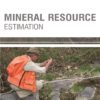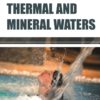Many multispectral (MSS) systems sense radiation in the thermal infrared as well as the visible and reflected infrared portions of the spectrum. However, remote sensing of energy emitted from the Earth’s surface in the thermal infrared (3 μm to 15 μm) is different than the sensing of reflected energy. Thermal sensors use photo detectors sensitive to the direct contact of photons on their surface, to detect emitted thermal radiation. Remote sensing has entered a new era in the twenty-first century with a series of operating satellites from the NASA Earth Observing System (EOS) program, other international programs, and commercial programs. Remote sensing has advanced significantly over the past half-century in the capacity to retrieve useful biochemical, physiological and structural quantities across a range of spatial and temporal scales. Detecting and monitoring heat loss from buildings in urban areas is an excellent application of thermal remote sensing.
Quantitative Remote Sensing in Thermal Infrared provides a comprehensive and advanced overview of the basic theory of thermal remote sensing and its application in hydrology, agriculture, and forestry. It will be an especially valuable resource for students, researchers, experts, and decision-makers whose interest focuses on the retrieval and validation of surface temperature/emissivity, the estimation and validation of evapotranspiration at satellite pixel scale, and the application of thermal remote sensing.













